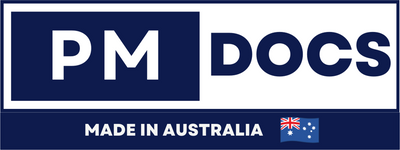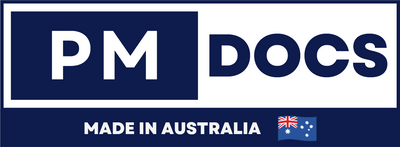ISO 22301 Certification In Australia Business Continuity Explained
Navigating The Tumultuous Tides: ISO 22301 Certification For Australian Business Continuity Explained
In an increasingly unpredictable world, the ability of an organisation to withstand and recover from disruptive incidents is no longer a luxury – it’s a non-negotiable imperative. From devastating bushfires and floods to sophisticated cyberattacks, global pandemics, and economic shifts, Australian businesses face a unique array of challenges that can cripple operations, damage reputations, and lead to significant financial losses. This is where Business Continuity (BC) steps in, and at its heart for global best practice lies ISO 22301 Certification.

For Australian enterprises aiming not just to survive but to thrive amidst adversity, understanding and implementing the principles of ISO 22301 is crucial. This blog post will delve into what ISO 22301 entails, why it’s particularly vital for businesses down under, and how achieving this certification can fortify your organisation against the unexpected.
What Is Business Continuity (BC) And Why Does It Matter To Australia?
At its core, Business Continuity is an organisation's capability to continue to deliver products or services at pre-defined acceptable levels following a disruptive incident. It’s about being prepared, having a plan, and executing that plan when the worst happens, ensuring your essential functions remain operational.
For Australia, the need for robust BC is amplified by several factors:
-
Natural Disasters: Australia is prone to extreme weather events, including bushfires, floods, cyclones, and droughts, which can cause widespread disruption to infrastructure, supply chains, and workforces.
-
Geographic Isolation: As an island continent, Australia's supply chains are often long and vulnerable to international disruptions, from shipping delays to geopolitical events.
-
Infrastructure Vulnerability: While robust, critical infrastructure (energy, water, telecommunications) can be susceptible to natural disasters, cyberattacks, or technical failures, with cascading effects.
-
Cyber Threats: Like businesses globally, Australian organisations are prime targets for cyberattacks, which can lead to data breaches, system downtime, and reputational damage.
- Economic Volatility: Global and regional economic shifts can impact market demand, supply chain stability, and access to resources.
A well-structured BC framework minimises downtime, protects revenue, safeguards brand reputation, and most importantly, ensures the safety and well-being of employees and stakeholders.
Introducing ISO 22301: The Global Benchmark For Business Continuity
ISO 22301:2019 is the international standard for a Business Continuity Management System (BCMS). Published by the International Organization for Standardization (ISO), it provides a verifiable framework for organisations of all sizes and types to establish, implement, operate, monitor, review, maintain, and continually improve a BCMS.
The standard is designed to help organisations:
-
Protect against: Identify potential threats and vulnerabilities.
-
Reduce the likelihood of: Implement controls to minimise the risk of incidents.
-
Prepare for: Develop plans and strategies to respond effectively.
-
Respond to: Manage incidents as they occur.
- Recover from: Restore operations to an acceptable level within a defined timeframe.
ISO 22301 follows the common "Plan-Do-Check-Act" (PDCA) cycle, ensuring a systematic approach to continuous improvement in business continuity management. It’s not just about having a plan; it’s about having a tested, living system that evolves with your organisation and its operating environment.
Why ISO 22301 Certification Matters For Australian Businesses?
Achieving ISO 22301 certification offers a multitude of strategic advantages for Australian organisations:
-
Enhanced Resilience & Faster Recovery: By implementing the standard, businesses develop robust strategies to quickly resume critical functions after an incident, significantly reducing downtime and potential losses.
-
Risk Mitigation & Proactive Management: The certification process forces a comprehensive analysis of potential threats and vulnerabilities, leading to proactive measures to reduce their likelihood and impact.
-
Regulatory Compliance & Due Diligence: For Australian industries regulated by bodies like APRA (financial services) or ASIC, demonstrating a robust BCMS through ISO 22301 can satisfy stringent compliance requirements and prove due diligence.
-
Competitive Advantage & Market Differentiation: In tenders and partnerships, particularly with government bodies or large corporations, ISO 22301 certification signals a higher level of reliability and trustworthiness, setting you apart from competitors.
-
Improved Stakeholder Confidence: Clients, investors, insurers, and supply chain partners gain greater confidence in your organisation's ability to deliver, even under adverse conditions. This can lead to stronger relationships and increased business opportunities.
-
Potential for Reduced Insurance Premiums: Insurers often view certified organisations as lower risk, potentially leading to more favorable policy terms and lower premiums.
-
Stronger Supply Chain Resilience: Encouraging or requiring your key suppliers to also adhere to BC principles (or even become certified) strengthens the resilience of your entire value chain.
- Operational Efficiency: The process of identifying critical activities and resources often uncovers inefficiencies and provides opportunities for process optimisation.
Key Principles Of ISO 22301
The ISO 22301 standard is built upon several foundational principles, guiding organisations in establishing an effective BCMS:
-
Context of the Organisation: Understanding internal and external issues, interested parties, and the scope of the BCMS. This includes identifying specific Australian risks.
-
Leadership: Demonstrable commitment from top management to establish, implement, maintain, and continually improve the BCMS.
-
Planning: Identifying risks and opportunities, setting BC objectives, and planning actions to achieve them. This involves crucial activities like Business Impact Analysis (BIA) and Risk Assessment.
-
Support: Ensuring the necessary resources (people, infrastructure, environment), competence, awareness, communication, and documented information are in place to support the BCMS.
-
Operation: Implementing the planned processes for BC, including developing BC strategies, procedures, and plans, and regularly exercising and testing them.
-
Performance Evaluation: Monitoring, measuring, analysing, evaluating, and auditing the BCMS to ensure it is effective and achieving its intended outcomes.
- Improvement: Taking action to address nonconformities and continually enhance the suitability, adequacy, and effectiveness of the BCMS.
The ISO 22301 Certification Process In Australia
Achieving ISO 22301 certification involves a structured approach, typically broken down into three main phases:
Table: ISO 22301 Certification Journey - Key Phases
| Phase | Key Activities | Outcome |
|---|---|---|
| 1. Preparation & Implementation |
Gap Analysis: Evaluate current BC practices against ISO 22301 requirements. Scope Definition: Determine the boundaries of your BCMS. Business Impact Analysis (BIA): Identify critical activities, their dependencies, and the impact of disruption (e.g., in Australian dollars, reputational damage). Risk Assessment: Identify potential threats (e.g., bushfire, cyberattack, flood specific to your region) and their likelihood/impact. BC Strategy & Plan Development: Create strategies to recover critical activities and detailed response and recovery plans. Training & Awareness: Educate employees on BC roles and responsibilities. Testing & Exercising: Conduct drills and simulations to validate plans. Internal Audit & Management Review: Self-assess the BCMS effectiveness. |
A fully developed, implemented, and refined BCMS, ready for external audit. |
| 2. Certification Audit |
Stage 1 Audit (Documentation Review): An accredited certification body reviews your BCMS documentation to ensure compliance with the standard. Stage 2 Audit (On-site Assessment): Auditors visit your premises to assess the practical implementation and effectiveness of your BCMS in action. Corrective Actions: Address any non-conformities identified during the audits. |
A recommendation for certification (or identification of non-conformities requiring action before certification can be granted). |
| 3. Maintenance & Improvement |
Annual Surveillance Audits: The certification body conducts yearly audits to ensure ongoing compliance and effectiveness. Management Review: Regular reviews by top management to oversee the BCMS. Continual Improvement: Regularly update and enhance the BCMS based on lessons learned, changes in context, and performance evaluations. Recertification: A comprehensive audit conducted typically every three years to renew your certification. |
Continued compliance with ISO 22301, enhanced organisational resilience, and sustained certification status. |
Benefits For Australian Businesses – Beyond Compliance
While the direct benefits listed earlier are compelling, the true value of ISO 22301 for Australian businesses extends into several impactful areas:
-
Minimised Financial Losses: By reducing downtime and enabling faster recovery, businesses protect revenue streams and avoid the substantial costs associated with prolonged disruptions.
-
Protected Brand Image and Reputation: Demonstrating proactive resilience reassures customers, investors, and the public, safeguarding your brand's integrity during a crisis.
-
Improved Supplier and Partner Relationships: A certified BCMS provides confidence to your supply chain, potentially leading to more reliable partnerships and preferential treatment.
-
Enhanced Employee Safety and Morale: Well-defined BC plans include provisions for employee safety and communication, fostering a sense of security and trust during emergencies.
- A Culture of Resilience: The process cultivates a pervasive mindset of preparedness and continuous improvement throughout the organisation, embedding resilience into its DNA.
Challenges And Considerations For Australian Businesses
Implementing ISO 22301 isn't without its challenges, particularly in the Australian context:
-
Understanding Specific Local Risks: Tailoring the BIA and Risk Assessment to unique Australian threats (e.g., remote area access during floods, specific cyber threat landscapes).
-
Resource Allocation: Dedicating sufficient time, budget, and personnel for implementation and ongoing maintenance can be a hurdle for SMEs.
-
Engaging Top Management: Securing genuine leadership commitment is vital, as BCMS requires strategic oversight and endorsement from the highest levels.
-
Supplier Resilience: Ensuring third-party providers, especially those critical to operations, also maintain adequate BC measures.
- Choosing the Right Certification Body: Selecting an accredited and reputable certification body with a strong understanding of the Australian business environment is crucial.
Conclusion: Build Resilience, Not Just Recovery
In Australia, the question is not if a disruptive incident will occur, but when. ISO 22301 certification transcends mere compliance; it's a strategic investment in your organisation's future, safeguarding its operations, reputation, and financial stability against an ever-evolving threat landscape.
By systematically addressing business continuity, Australian businesses can not only mitigate risks but also enhance their competitive edge, build stronger stakeholder relationships, and ultimately, ensure their ability to continue delivering value no matter what challenges arise. Don't wait for a crisis to expose your vulnerabilities; take proactive steps towards building a more resilient and sustainable future with ISO 22301.




